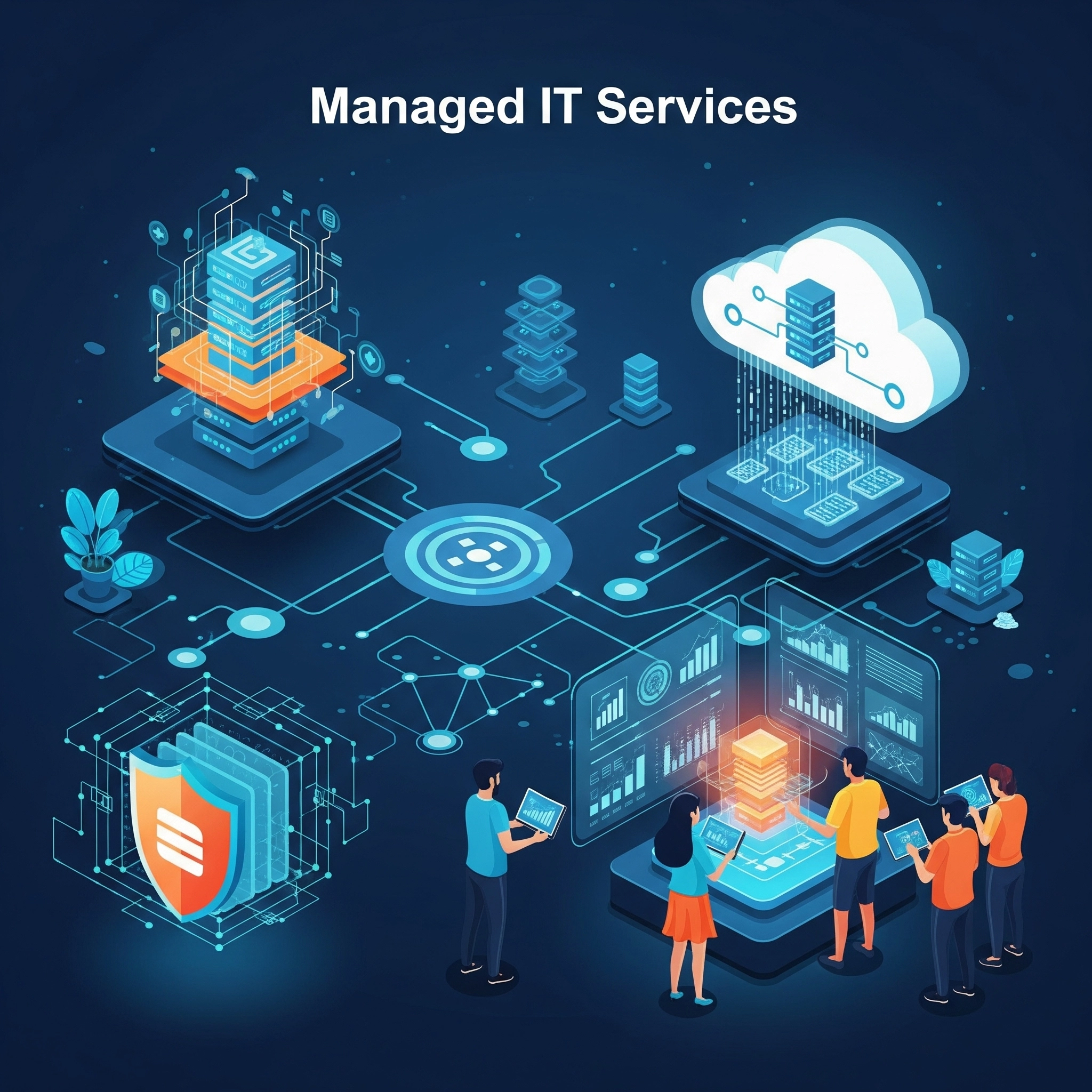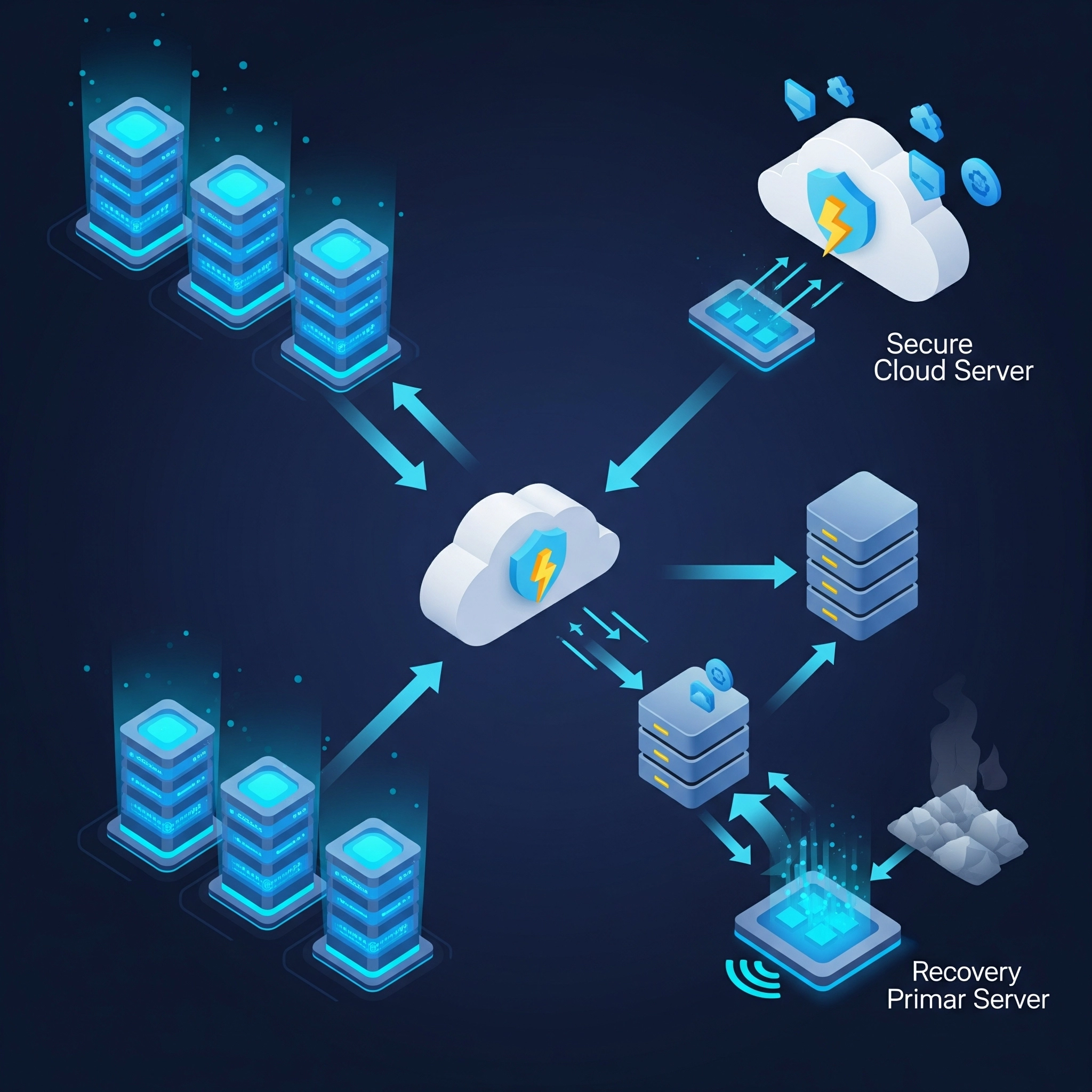Cyber Security
What is Cybersecurity for Websites?
At its core, cybersecurity for websites involves protecting your website, its underlying infrastructure, and the data it processes from unauthorized access, damage, or disruption. This encompasses a wide range of practices, technologies, and processes designed to maintain the confidentiality, integrity, and availability (CIA triad) of your online presence.
- Confidentiality: Ensuring that sensitive data (user credentials, personal information, financial data) is only accessible to authorized individuals.
- Integrity: Guaranteeing that data remains accurate, consistent, and unaltered by unauthorized parties.
- Availability: Making sure your website and its services are accessible to legitimate users when they need them.
What is Threat Protection for Websites?
Threat protection specifically refers to the active measures and technologies implemented to detect, prevent, and respond to various cyber threats targeting your website. It`s the practical application of cybersecurity principles to defend against real-world attacks. This often involves a multi-layered approach, combining different tools and strategies to create a robust defense.
Common Cyber Threats to Websites
Understanding the enemy is the first step in effective defense. Here are some of the most prevalent and dangerous cyber threats to websites:
- Malware Attacks:
- Viruses, Worms, Trojans: Malicious code designed to infiltrate systems, replicate, and cause damage, steal data, or create backdoors.
- Ransomware: Encrypts a website`s data, demanding a ransom (often in cryptocurrency) for its decryption.
- Spyware/Adware: Secretly collects user data or displays unwanted advertisements.
- Cryptojacking: Unauthorized use of a website`s computing resources to mine cryptocurrency.
- Injection Attacks:
- SQL Injection (SQLi): Attackers insert malicious SQL code into input fields to manipulate database queries, leading to unauthorized data access, modification, or deletion.
- Cross-Site Scripting (XSS): Attackers inject malicious client-side scripts (usually JavaScript) into web pages viewed by other users, leading to data theft, session hijacking, or defacement.
- Command Injection: Similar to SQLi, but targets system commands, allowing attackers to execute arbitrary commands on the server.
- Denial-of-Service (DoS) and Distributed Denial-of-Service (DDoS) Attacks:
- Overwhelm a website`s server or network with a flood of traffic, making it unavailable to legitimate users. DDoS attacks use multiple compromised systems (botnet) to amplify the attack.
- Broken Authentication and Session Management:
- Weak or poorly implemented authentication mechanisms (e.g., weak passwords, no MFA) and session management can allow attackers to hijack user accounts or sessions.
- Sensitive Data Exposure:
- Failure to adequately protect sensitive data (e.g., credit card numbers, personal identifiable information) in transit or at rest, making it vulnerable to theft.
- Broken Access Control:
- Flaws in how a website enforces permissions, allowing users to access unauthorized functionalities or data.
- Security Misconfigurations:
- Default credentials, unpatched software, unnecessary services enabled, or improper file permissions that create exploitable vulnerabilities.
- Cross-Site Request Forgery (CSRF):
- Tricks a logged-in user into performing unwanted actions on a web application, often by embedding malicious requests in seemingly legitimate websites.
- Social Engineering Attacks:
- Phishing: Deceptive emails or messages designed to trick users into revealing sensitive information or clicking malicious links.
- Baiting/Pretexting: Luring users with promises or false pretenses to gain access to systems or information.
- Supply Chain Attacks:
- Compromising third-party software components, libraries, or services used by your website, leading to vulnerabilities that can be exploited.
- Man-in-the-Middle (MitM) Attacks:
- Attackers intercept communication between two parties (e.g., user and website) to eavesdrop, alter, or inject malicious data. This can happen through Wi-Fi eavesdropping or DNS/IP spoofing.
Comprehensive Cybersecurity and Threat Protection Strategies
Securing your website requires a multi-faceted and proactive approach. Here`s an elaborate breakdown of key strategies:
1. Secure Development Practices (Shift Left Security)
- Secure Coding: Develop your website with security in mind from the ground up. This includes input validation, output encoding, proper error handling, and avoiding common coding vulnerabilities.
- Security by Design: Integrate security considerations into every phase of the software development life cycle (SDLC).
- Regular Security Audits & Code Reviews: Periodically review your codebase for vulnerabilities and adherence to secure coding standards.
- Threat Modeling: Identify potential threats and vulnerabilities early in the design phase.
2. Website Infrastructure Security
- Secure Web Hosting: Choose a reputable hosting provider that offers robust security features, including DDoS protection, firewalls, regular backups, and isolated hosting environments.
- Web Application Firewall (WAF): A WAF acts as a shield between your website and the internet, filtering, monitoring, and blocking malicious HTTP/S traffic. It protects against common web vulnerabilities like SQL injection, XSS, and broken authentication. Many WAFs can be customized and some use machine learning for automatic policy updates.
- DDoS Protection: Implement solutions that can detect and mitigate large-scale DDoS attacks. This often involves traffic scrubbing, rate limiting, and leveraging Content Delivery Networks (CDNs) to absorb and distribute traffic.
- Network Segmentation: Divide your network into isolated segments to limit the spread of an attack if a breach occurs.
- Intrusion Detection/Prevention Systems (IDS/IPS):
- IDS: Monitors network traffic and system activity for suspicious patterns or known attack signatures, alerting administrators to potential threats.
- IPS: Goes a step further by actively blocking or preventing detected intrusions in real-time.
- Regular Backups and Disaster Recovery: Implement a robust backup strategy for your website data and configuration files. Store backups securely and off-site. Have a clear disaster recovery plan to quickly restore your website in case of a breach or data loss.
3. Data Protection and Encryption
- SSL/TLS Certificates (HTTPS): Essential for encrypting communication between your website and users` browsers. This protects data in transit from eavesdropping and ensures data integrity. A "lock" icon and "https://" in the URL indicate a secure connection.
- Data at Rest Encryption: Encrypt sensitive data stored on your server, such as databases and file systems, to protect it even if the server is compromised.
- Strong Hashing for Passwords: Never store passwords in plaintext. Use strong, one-way cryptographic hashing algorithms (with salting) to store user passwords.
- Principle of Least Privilege (PoLP): Grant users and applications only the minimum access permissions necessary to perform their functions. Regularly review and audit these permissions.
4. Authentication and Access Control
- Strong Password Policies: Enforce complex passwords (combination of uppercase, lowercase, numbers, special characters), minimum length requirements, and discourage reuse.
- Multi-Factor Authentication (MFA/2FA): Implement MFA for all user accounts, especially for administrative access. This adds an extra layer of security beyond just a password (e.g., a code from a mobile app, a physical key).
- Role-Based Access Control (RBAC): Define roles with specific permissions and assign users to those roles, rather than granting individual permissions.
- Regular Auditing of User Accounts: Periodically review user accounts, revoke access for terminated employees, and adjust permissions as roles change.
5. Software and System Updates
- Keep All Software Updated: This includes your Content Management System (CMS), themes, plugins, operating system, web server software, and database software. Developers regularly release patches for newly discovered vulnerabilities. Enable automatic updates where feasible and conduct routine checks for new patches.
- Patch Management: Establish a process for promptly applying security patches and updates.
6. Regular Security Monitoring and Scanning
- Malware Scanning: Implement regular (daily or more frequent) scans for malware on your website files and database. Many hosting providers offer this service, or you can use third-party tools.
- Vulnerability Scanning: Use automated tools to scan your website for known vulnerabilities, misconfigurations, and outdated software.
- Penetration Testing (Pen Testing): Hire ethical hackers to simulate real-world attacks to identify exploitable vulnerabilities that automated scanners might miss. This should be done periodically and after significant changes to your website.
- Security Information and Event Management (SIEM): Centralize and analyze security logs from various sources (servers, firewalls, applications) to detect suspicious activity and potential threats in real-time.
7. Incident Response and Disaster Recovery Plan
- Develop an Incident Response Plan (IRP): A detailed, step-by-step plan outlining how your organization will detect, respond to, contain, eradicate, and recover from a cybersecurity incident. This should include:
- Roles and Responsibilities: Who does what during an incident.
- Communication Protocols: How internal and external stakeholders (users, media, regulators) will be informed.
- Containment Strategies: Steps to limit the damage and prevent further spread.
- Eradication: Removing the root cause of the incident.
- Recovery: Restoring affected systems and data.
- Post-Incident Analysis: Learning from the incident to improve future defenses.
- Regular Testing of the IRP: Conduct drills and simulations to ensure the plan is effective and that your team is prepared.
8. Employee Training and Awareness
- Security Awareness Training: Educate all employees (especially those with access to the website backend or sensitive data) about common cyber threats (phishing, social engineering), strong password practices, and secure data handling.
- Phishing Simulations: Conduct simulated phishing attacks to test employee awareness and identify areas for further training.
- Reporting Procedures: Establish clear procedures for employees to report suspicious activities or potential security incidents without fear of reprisal.
9. Compliance and Regulatory Adherence
- GDPR, CCPA, HIPAA, PCI DSS: Depending on your website`s nature and target audience, you may need to comply with various data privacy and security regulations. These regulations often mandate specific security measures and incident reporting requirements.
- Regular Audits: Conduct regular compliance audits to ensure your website meets all relevant regulatory standards.
.webp)







 Call Now
Call Now

